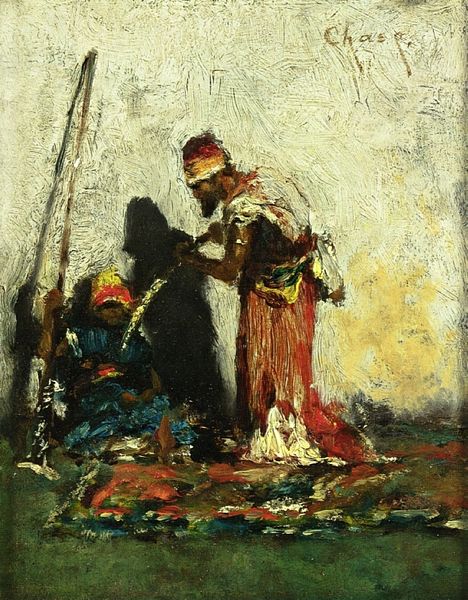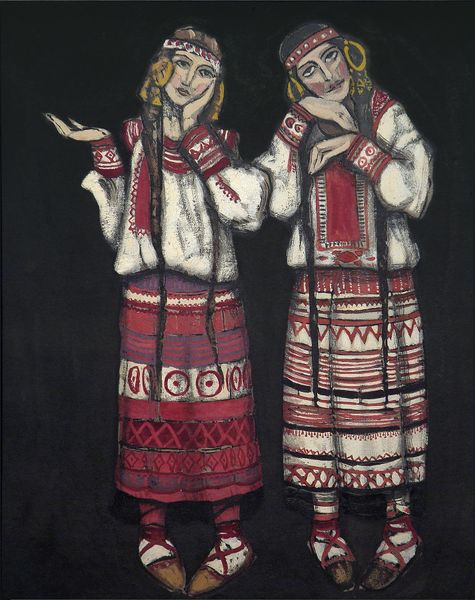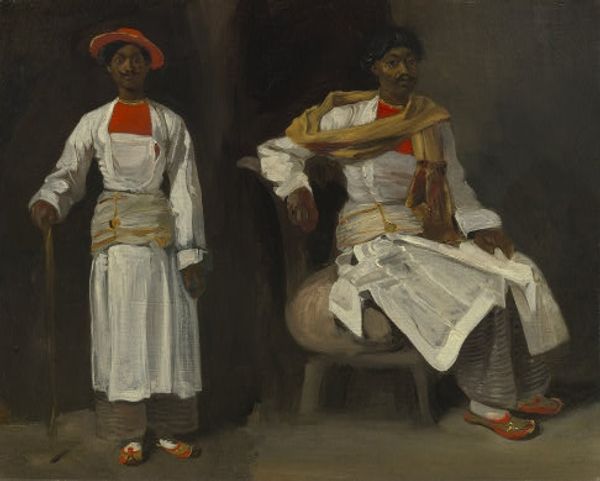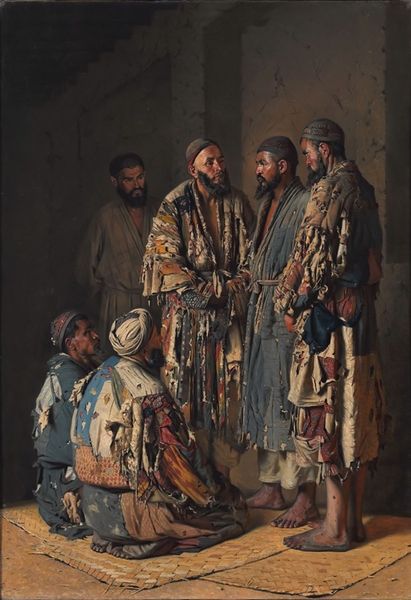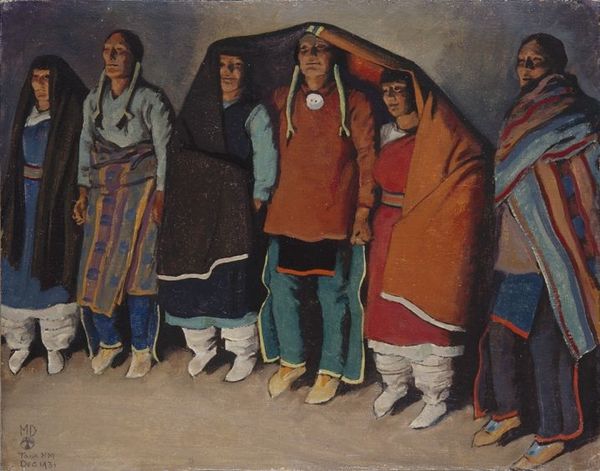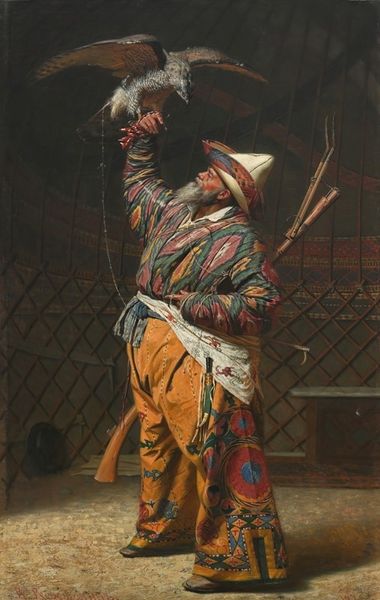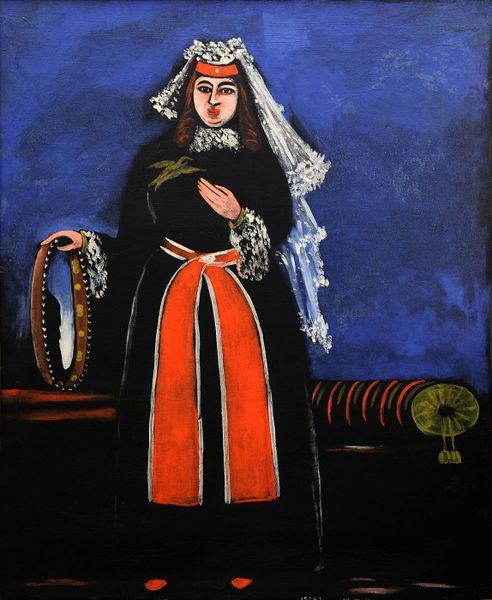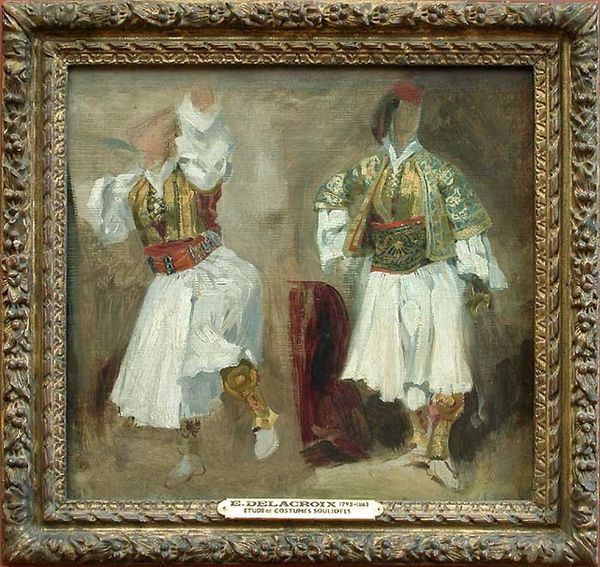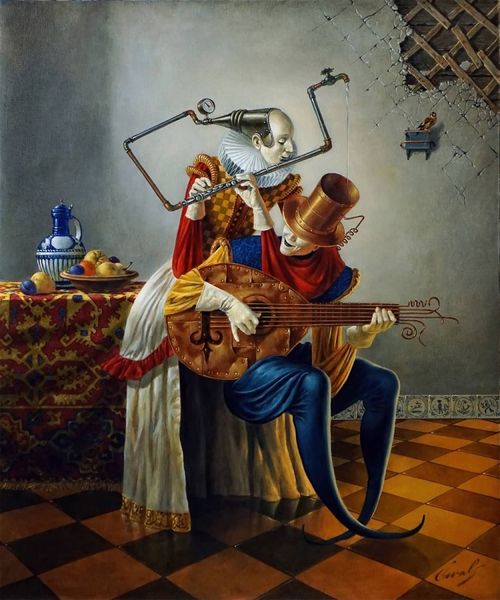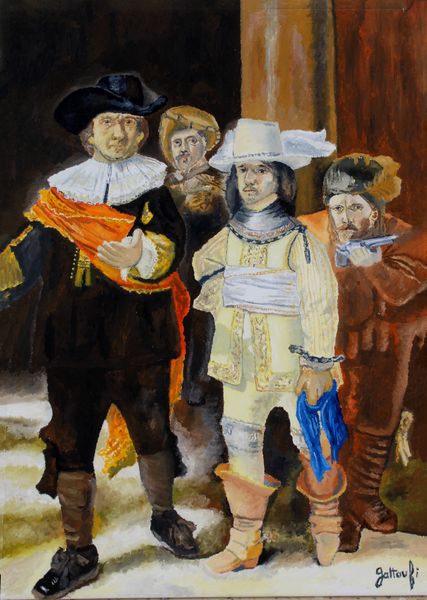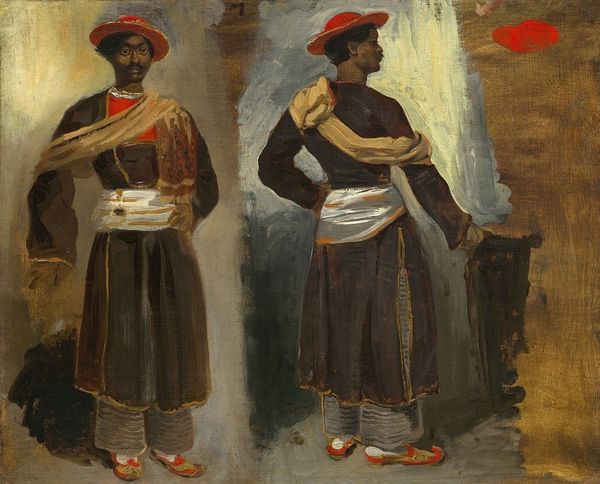
oil-paint
#
portrait
#
gouache
#
oil-paint
#
oil painting
#
group-portraits
#
orientalism
#
genre-painting
#
realism
Copyright: Public Domain: Artvee
Curator: Painted around 1869-1870, this oil-on-canvas work by Vasily Vereshchagin is entitled "Dervishes in Festive Attire". What strikes you initially about this piece? Editor: Well, right off the bat, it feels like someone threw a party at a fabric store and these fellas raided the costume bin. It's so rich in textures, though, like peering into a kaleidoscope made of hand-stitched quilts. What about you? Curator: I'm fascinated by the work’s cultural context. Vereshchagin, as an Orientalist painter, was depicting a vision of Central Asia that resonated with European audiences. It invites us to consider how the West understood and portrayed the East during that time, with all the biases and projections involved. The very notion of "festive attire" can be subjective when viewed across different cultures. Editor: Interesting! It does make you wonder what their ordinary garb might have looked like. The robes almost seem like wearable tapestries, full of untold stories and travels. But, in my imagination, there’s a shadow hanging around the subjects. Are they in confinement, literally boxed in by that backdrop? Or it is simply their gathering place? Curator: The realism he employs adds to this idea that we are observing a very particular moment in time. The fact that the Dervishes' gaze is cast downward creates a sense of enclosure, whether it's of their own doing or a physical space created for them. Editor: Exactly! Even though it's a group, I get the distinct feeling they're each lost in thought, on a journey inwards. Are we invited into their experience or just eavesdropping on an ancient, solemn ritual? Curator: And Vereshchagin positions the viewer as that voyeur, doesn't he? Without glorifying it, we are confronted with an unfamiliar religious tradition. How does it prompt questions about faith, identity, and belonging within broader social structures? Editor: It does trigger this tension—of being drawn in by the finery, the visual spectacle, but then reminded of the very real, grounded existence these figures led. Maybe "Dervishes in Contemplative Attire" would’ve been a less exoticized title? Curator: It certainly shifts the focus, doesn’t it? From exterior display to internal reflection. It reminds us how loaded even seemingly descriptive labels can be. I now realize this piece might spark more questions than it answers. Editor: Absolutely! And isn't that precisely what makes a painting linger in the mind, long after you've wandered out of the gallery? It’s like catching a fragment of a dream, still vivid yet strangely elusive.
Comments
No comments
Be the first to comment and join the conversation on the ultimate creative platform.


